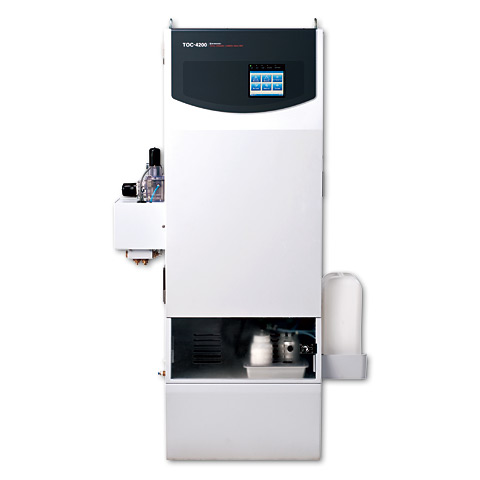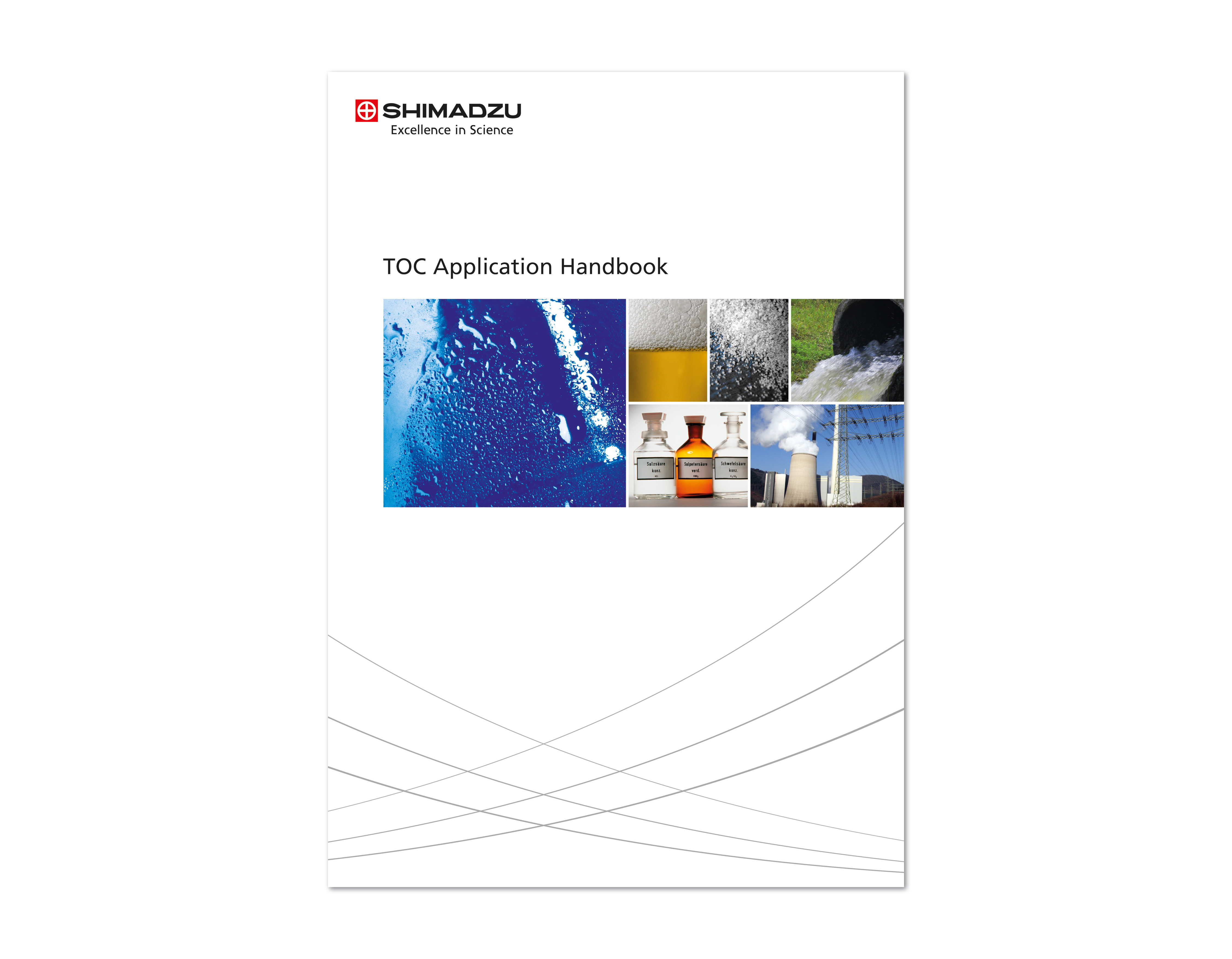Customized TOC analysis
The online TOC-4200 with many options and kits
 Figure 1: The TOC-4200
Figure 1: The TOC-4200
In monitoring of wastewaters or quality control of ultrapure water – wherever the organic load of water plays a major role, TOC analyses are used. The TOC (Total Organic Carbon) sum parameter defines the carbon concentrations in organic compounds in a matrix and is therefore considered to be a measure of contamination by organic compounds.
However, different applications and measurement tasks also place different demands on the analyzer. Some waters contain high concentrations of organic substances while other waters contain hardly any, or only very small amounts of TOC. Some waters are clear, others contain particulate matter, still others contain large amounts of salt or inorganic carbon compounds such as carbonates or hydragon carbonates.
Process analysis enables fast response
It is often important to monitor water quality very closely and in real-time. Conventional laboratory analyses will not be adequate here. It often takes too much time from collecting a sample and analyzing it in the laboratory to having the results available. Process analysis has been developed for such cases. Here, a special analyzer operates at close distance to a wastewater discharge line or a process, to withdraw a sample periodically (for instance every ten minutes), process it, and analyze and evaluate it. The analyzer then sends the analysis value automatically to a process control system. The wastewater plant can now respond promptly to any changes or abnormalities.
The TOC parameter can be determined easily and securely in online process analysis. The analyzer withdraws an aliquot of the sample and mixes it with an acid. The acid decomposes inorganic carbon such as carbonates and hydrogen carbonates compounds. The resulting CO2 is sparged from the sample using a sparge gas.
Subsequently, an aliquot of the sample is injected onto a hot platinum catalyst (680 °C). The organic carbon compounds are oxidized to carbon dioxide and transferred by the carrier gas to an NDIR detector, which detects the amount of CO2 produced. A single analysis takes about 3 to 4 minutes, so the TOC can also be measured in the shortest time intervals.
 Figure 2: TOC Applikation Handbook
Figure 2: TOC Applikation Handbook
Numerous applications for process analysis
- Wastewater treatment plant inflow is monitored to prevent damage to the biology of the plant by high organic loads with associated high costs. To check the operation of the wastewater treatment plant, the plant’s outflow is also examined.
- In industrial applications, the organic load in a wastewater is often used to calculate the sewage charge. Therefore, the wastewater streams are often monitored online.
- In the steam-water cycle of a power plant, the water is allowed to evaporate and condense again and again. The organic substances can accumulate and damage the components of the turbines. Online monitoring of the condensate protects the plant components from damage.
- During cold spells, aircrafts are treated with de-icing agents shortly before takeoff. This results in wastewater with very high concentrations of organic substances. Airport operators therefore examine their wastewater streams during the winter months using online TOC systems.
- In some applications, the TOC serves as a quality parameter. Starting materials or products are examined for possible organic impurities. In critical applications, this also needs to be monitored around the clock.
- To cool industrial processes or plant components, water from flowing watercourses is often used. This water is subsequently led back. It is hard to imagine what environmental damage could occur when plant components start to leak and let environmentally hazardous substances enter our watercourses – not to mention the damage to the plant and the company’s reputation. Here also, online TOC analyzers are of great help in protecting the environment as well as the company.
These are just some examples of the many application areas of TOC process analyzers. To meet the requirements of each application, one needs systems that can be customized to the respective measurement task. To do so requires many special options and kits.
Universally applicable and adaptable
Shimadzu’s TOC-4200 is a TOC process analyzer featuring all of these characteristics. The universal system can be customized to any measuring task using many accessories. Various types of sampling systems are available. There are samplers with homogenizers that homogenize particle-containing wastewaters as well as special sampling stations for ultrapure water. Various rinsing systems such as an acid or base rinse can be used to clean the sampling system. Sample stream exchangers enable monitoring of up to six different sample streams using a TOC-4200.
The analyzer also features an automatic dilution function. This not only increases the already wide measuring range, but also enables the creation of multi-point calibrations from a standard solution.
Process analyzers must be able to largely operate autonomously. Maintenance requirements should be as low as possible and service life as long as possible. High salt loads in the sample reduce the maintenance interval. A high-salt kit has been developed specifically for this purpose. It consists of a catalyst tube with a specific geometry and a special catalyst mixture that can handle up to twelve times the amount of salt-containing sample, compared to a conventional catalyst. In addition, the dilution factor can also help to reduce sample matrix effects. A TN module enables the simultaneous determination of the total amount of nitrogen compounds.
Communication supports versatility
The communication options of the analyzer are also versatile. In addition to the conventional 4 – 20 mA line, the TOC-4200 also features Modbus communication. This enables wired communication between multiple analyzers and the control room. An additional web-based option enables access to measurement results and the status of the analyzer from any networked computer.
It is clear that the many options and kits make the TOC-4200 a universally applicable analyzer suited to any measuring task.